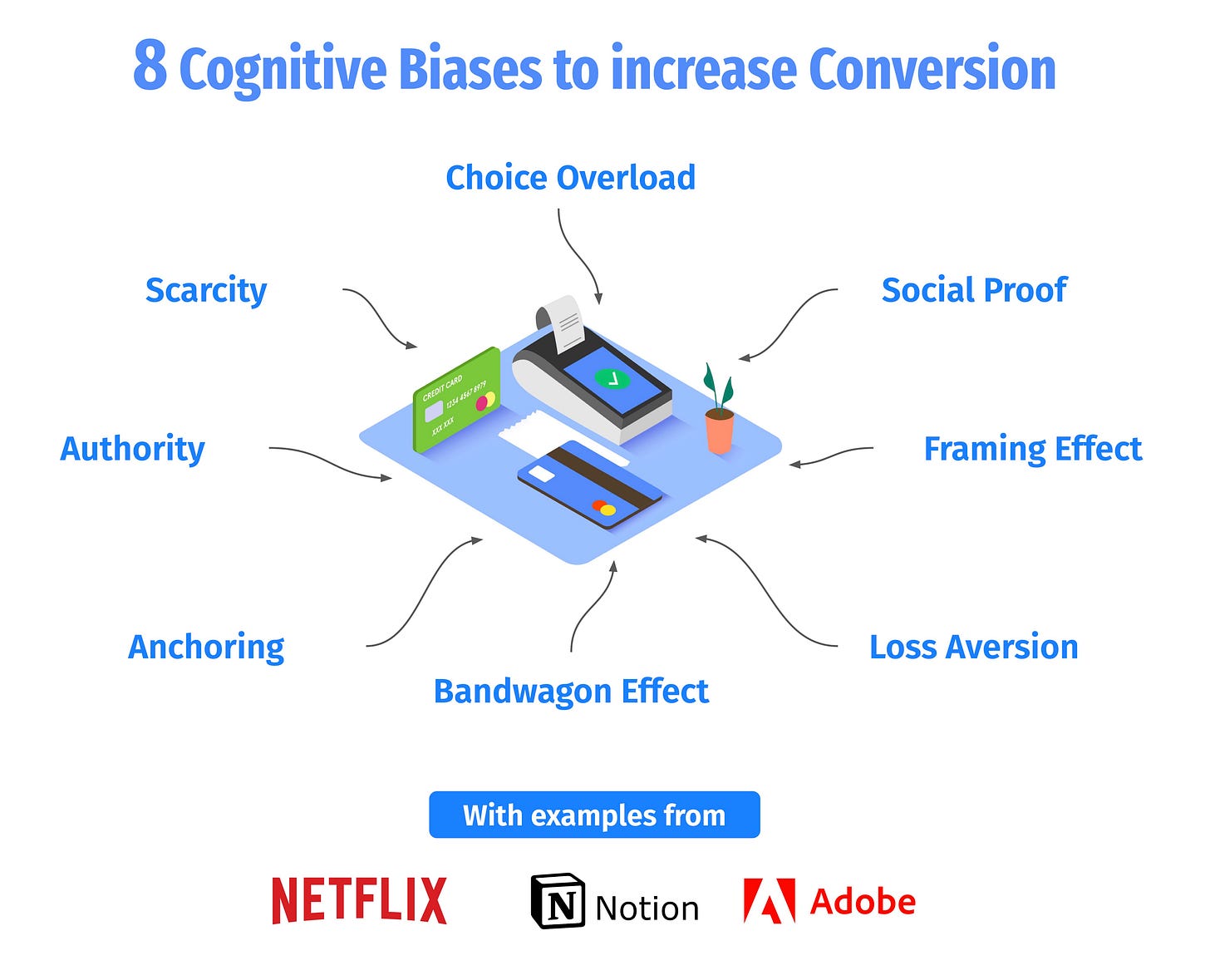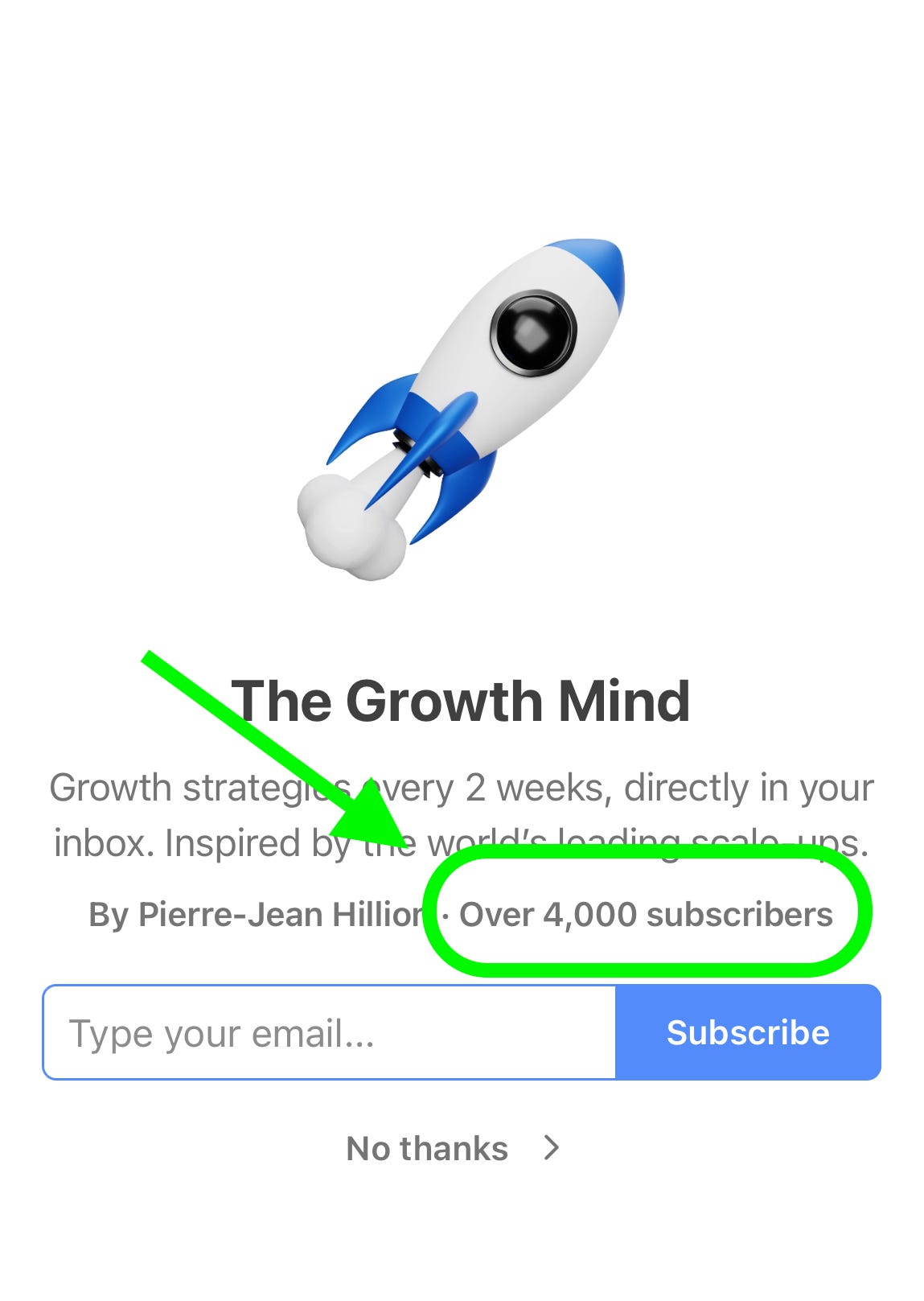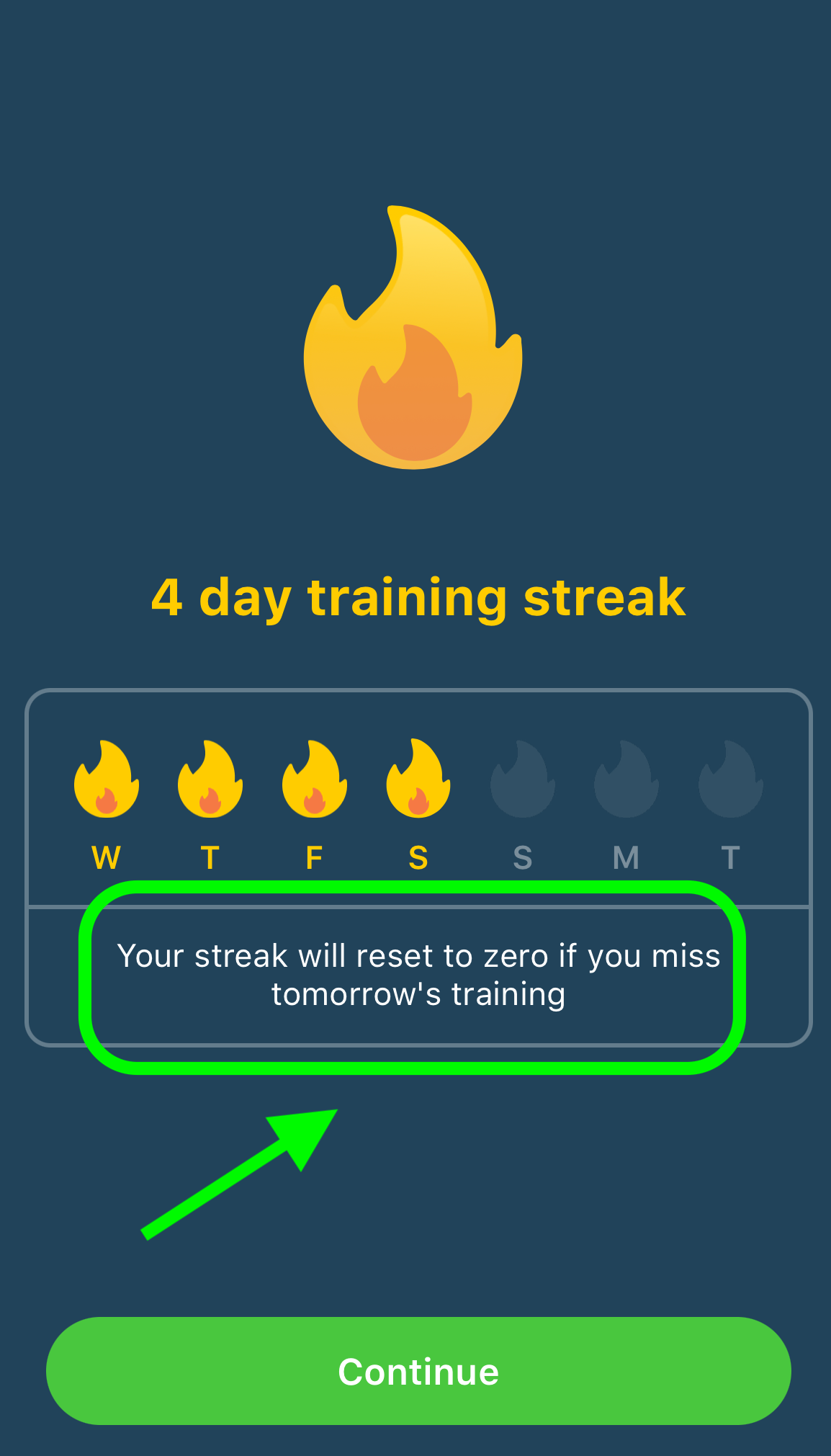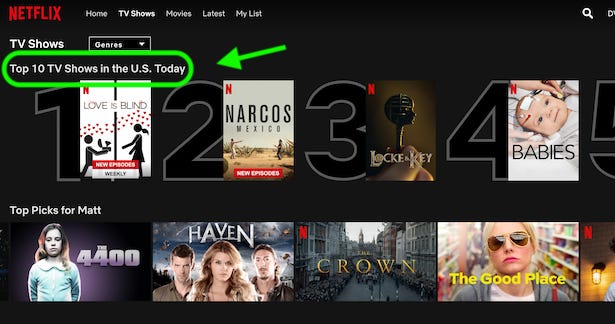🧠 8 Cognitive Biases to Increase Conversion
+12 real-life examples from stellar companies
Hi there 👋 Welcome to this new edition of The Growth Mind!
🆕 Sponsorship Openings
Before we start, I’m glad to announce that after recent proposals, I’m opening some sponsorship slots on The Growth Mind.
If you want to put your product in front of a highly qualified audience of +4,300 Founders, PMs and Marketers from companies like Calendly, Ankorstore or Braze, The Growth Mind is the right place to do it. The first slot is already booked for January.
Click below to get more details 👇
🧠 8 Cognitive Biases to Increase Conversion
Cognitive Biases are psychological tricks that can influence users’ choices.
They're a powerful lever to boost conversion, whether it’s on your landing pages or in your product. They help you make users go from point A to B, by taking a specific action (eg. booking a call, completing an onboarding, using a specific feature…). Playing on conversion, all over your different funnels, can lead to a significant revenue increase.
So in today’s article, we study 8 of those cognitive biases and see how you can leverage them with concrete examples 📈
Disclaimer: Cognitive Biases are powerful and can influence people's choices, but I strongly advise to always use them ethically. It’s okay to influence people to take a desired action by adding relevant value, but it’s not okay to give them false information or use creepy tactics.
1# Social Proof
Probably the most used and known cognitive bias in the Marketing industry.
Social Proof relies on the fact that, as humans, we tend to be influenced by what others do. It reassures us to see that other people have done it, and liked it, before.
To leverage Social Proof, you can use:
Testimonials: Displaying customer testimonials on your landing page or a paywall.
User Count: Mention the number of people already using your product (eg. “Join a community of +100,000 users).
Customers Logos: Show the big companies using your product.
Social Media Mentions: A live X or Instagram feed of people mentioning your product.
Real-Life Examples👇
Miro uses well-known tech companies’ logos on its homepage
Substack, on newsletters subscription pages, highlight the number of subscribers
2# Authority Bias
People tend to have a higher perceived value of a product when a figure of authority is talking about it or validating a statement.
To leverage Authority Bias, you can use:
Quotes or mentions from experts in your industries.
Scientific studies that corroborate your copies.
Media mentions from well-known newspapers of TV channels.
Awards from a tech or product website (eg. Product of The Week on Product Hunt).
Real-Life Examples👇
Zefi.ai added it’s Product of the Day badge from Product Hunt to outlines their product is loved by the Tech community
Rise Science created a “Learn” tab in their app, with scientific studies outlining the importance of sleep, and then giving credit to the app's main benefit: reduce your sleep debt.
3# Scarcity
Scarcity relies on the fact that we attribute a greater perceived value to a product or service that is considered rare or hard to get.
Scarcity is used a lot by E-commerce players, as well as mobile apps with premium plans.
To leverage Scarcity, you can use:
Limited-time offers: An offer only available for a few hours or weeks will create a sense of urgency.
Limited stocks: Adding the number of remaining products, especially when there are only a few, is powerful to create a sense of urgency.
Waitlist/Limited access: Having a waitlist or limited access, for example only possible through an invitation by a friend, can increase the perceived value of a product. It can also trigger virality.
Real-Life Examples👇
Notion created, during Notion AI launch, a waitlist to access the feature, making it a high-perceived-value feature and generated tens of thousands of sign-ups.
4# Anchoring Bias
Anchoring refers to the fact that we generally base our reasoning and perception on the first piece of information we see. The first thing we see serves as a reference point in our decision-making.
To leverage the Anchoring Bias, you can use:
Discounted prices: During promotions periods, when you need to stimulate demand, or during destocking operations.
Most expensive subscription plan presented first: Presenting the most expensive subscription plan first will make other plans look cheaper, as the most expensive serves as the reference point.
Before and after comparisons: Showing the value gained after using your product versus the current situation is a great way to illustrate benefits.
Real-Life Examples👇
Asphalte, an e-commerce brand, is showing the price of its products aside from a crossed-out price. They operate through a pre-order system. Using this system, rather than directly buying, gives you a discount.
Waalaxy, a LinkedIn outbound SaaS, shows its most expensive plan on the left, making the “Advanced” plan look like a reasonable option.
5# Loss Aversion
We all tend to avoid losses rather than acquire equivalent gains. Losing something we put effort into acquiring is considered painful by our brains.
To leverage Loss Aversion, you can use:
Summary of key features and benefits: When users want to cancel their plan or stop their onboarding, having a pop-up reminding the product value can make them stop their action.
Reminders of what users accomplished with your product: Adding streaks, the number of hours played on a game, or the savings made remind users of the value they got by using your product.
Real-Life Examples👇
Abode, when you start canceling your paid plan, remind you of the products you’ll lose access to, as well as the assets you created. A great way to remember all the things you can achieve with the product
Impulse, a brain training app, reminds you on each streak screen that you’ll lose your streak if you don’t play tomorrow. It’s a smart trick to boost daily usage of the app.
6# Bandwagon Effect
The Bandwagon Effect is a phenomenon where people do something simply because others are doing it. We are highly influenced by the choices our peers make, making us go by default for the most popular option.
To leverage the Bandwagon Effect, you can use:
“Most Popular” or “Trending now” labels: Those labels will highlight to users the products/options that are preferred by other people.
Usage statistics: Showing the number of people who use a feature or product will make them more appealing.
Real-Life Examples👇
Horace, a skincare brand for men, has a “Bestseller” label on their most popular products
7# Choice Overload
Providing too many choices to someone will make their decision-making harder because he’ll feel overwhelmed. Having different options is great, but too much is counterproductive.
To leverage Choice Overload, you can:
Reduce the number of options on a page: We generally recommend to have typically around 3 to 4 options for a subscription plan for example, but it depends of course on the product.
Highlight recommendations: To help users not feel lost in a sea of choices without any indicators.
Propose “by default” settings: To make the set-up of a product way easier than by setting your parameters by yourself (eg. for a video game).
Real-Life Examples👇
Netflix uses the famous “Top 10” in your country today to help you quickly find something great to watch and not spend hours searching
8# Framing Effect
The way information is presented drastically changes how we perceive it. What you say is important, but how you say it is sometimes even more. That’s exactly what messaging and copywriting are all about
To leverage the Framing Effect, you can:
Highlight the outcome/benefits of your product: We use a product to achieve a specific outcome with it, so instead of being only feature descriptive (even if it’s important sometimes), talk about what your users are going to accomplish.
Use risk-free options: Free trials or money-back guarantees reassure people.
Use positive figures: Instead of saying “5% fat”, say “95% fat-free”. See the difference?
Real-Life Examples👇
CyberGhost, a famous VPN, provides a 45-day money-back guarantee to convert risk-averse users. It looks popular in the VPN industry to use this tactic (Nord VPN does it also).
That’s all for today folks! See you in 2 weeks for the next edition of The Growth Mind 👋















Love these real-life examples ! Thanks for sharing 👏
Always a useful reminder! Congrats on your first sponsor 👏